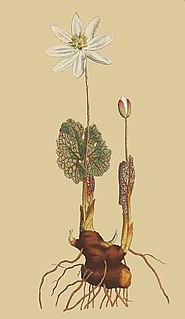| Look up fustic in Wiktionary, the free dictionary. |
Fustic is a common name for several plants and a dye produced from these plants:
- A dye made from Maclura tinctoria (old fustic)
- A dye made from Cotinus coggygria (young fustic)
| Look up fustic in Wiktionary, the free dictionary. |
Fustic is a common name for several plants and a dye produced from these plants:

Indigo is a deep color close to the color wheel blue, as well as to some variants of ultramarine, based on the ancient dye of the same name. The word "indigo" comes from the Latin for Indian as the dye was originally exported to Europe from India.

A berry is a small, pulpy, and often edible fruit. Typically, berries are juicy, rounded, brightly colored, sweet, sour or tart, and do not have a stone or pit, although many pips or seeds may be present. Common examples are strawberries, raspberries, blueberries, blackberries, red currants, white currants and blackcurrants. In Britain, soft fruit is a horticultural term for such fruits.
Crimson is a rich, deep red color, inclining to purple. It originally meant the color of the kermes dye produced from a scale insect, Kermes vermilio, but the name is now sometimes also used as a generic term for slightly bluish-red colors that are between red and rose. It is the national color of Nepal.

Reed is a common name for several tall, grass-like plants of wetlands.
Weld may refer to:

Maclura tinctoria, known as old fustic and dyer's mulberry, is a medium to large tree of the Neotropics, from Mexico to Argentina. It produces a yellow dye called fustic primarily known for coloring khaki fabric for U.S. military apparel during World War I. This dye contains the flavonoid morin. It is dioecious, so both male and female plants are needed to set seed.

Quercitron is a yellow natural dye obtained from the bark of the Eastern Black Oak, a forest tree indigenous in North America. It was formerly called Dutch pink, English pink, or Italian pink.
Indian mulberry may refer to:

Cotinus coggygria, syn. Rhus cotinus, the European smoketree, Eurasian smoketree, smoke tree, smoke bush, Venetian sumach, or dyer's sumach, is a species of flowering plant in the family Anacardiaceae, native to a large area from southern Europe, east across central Asia and the Himalayas to northern China.
A dyewood is any of a number of varieties of wood which provide dyes for textiles and other purposes. Among the more important are:
Dyer's oak may refer to two species of oak tree:

Genista tinctoria, the dyer's greenweed or dyer's broom, is a species of flowering plant in the family Fabaceae. Its other common names include dyer's whin, waxen woad and waxen wood. The Latin specific epithet tinctoria means "used as a dye".

Puccoon is a common name that refers to any of several plants formerly used by certain Native Americans for dyes. The dyes were made from the plants' roots.
Alkanet is the common name of several related plants in the borage family (Boraginaceae):
Madder is the common name for Rubia, a genus of flowering plants in the family Rubiaceae.
M. tinctoria may refer to:

Natural dyes are dyes or colorants derived from plants, invertebrates, or minerals. The majority of natural dyes are vegetable dyes from plant sources—roots, berries, bark, leaves, and wood—and other biological sources such as fungi.

Dyeing is the craft of imparting colors to textiles in loose fiber, yarn, cloth or garment form by treatment with a dye. Archaeologists have found evidence of textile dyeing with natural dyes dating back to the Neolithic period. In China, dyeing with plants, barks and insects has been traced back more than 5,000 years. Natural insect dyes such as Tyrian purple and kermes and plant-based dyes such as woad, indigo and madder were important elements of the economies of Asia and Europe until the discovery of man-made synthetic dyes in the mid-19th century. Synthetic dyes quickly superseded natural dyes for the large-scale commercial textile production enabled by the industrial revolution, but natural dyes remained in use by traditional cultures around the world.

Bulrushes is the vernacular name for several large wetland grass-like plants in the sedge family (Cyperaceae).